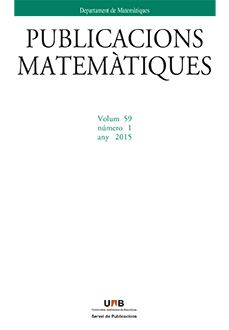Abstract
A Hopf Galois structure on a finite field extension $L/K$ is a pair $(H,\mu)$, where $H$ is a finite cocommutative $K$-Hopf algebra and $\mu$ a Hopf action. In this paper we present a program written in the computational algebra system Magma which gives all Hopf Galois structures on separable field extensions of degree up to eleven and several properties of those. Besides, we exhibit several results on Hopf Galois structures inspired by the program output. We prove that if $(H,\mu)$ is an almost classically Hopf Galois structure, then it is the unique Hopf Galois structure with underlying Hopf algebra $H$ up to isomorphism. For $p$ an odd prime, we prove that a separable extension of degree $p^2$ may have only one type of Hopf Galois structure and determine those of cyclic type; we determine as well the Hopf Galois structures on separable extensions of degree $2p$. We highlight the richness of the results obtained for extensions of degree $8$ by computing an explicit example and presenting some tables which summarize these results.
Funding Statement
Both authors acknowledge support by grant MTM2015-66716-P (MINECO/FEDER, UE)
Citation
Teresa Crespo. Marta Salguero. "Computation of Hopf Galois structures on low degree separable extensions and classification of those for degrees $p^2$ and $2p$." Publ. Mat. 64 (1) 121 - 141, 2020. https://doi.org/10.5565/PUBLMAT6412005
Information





